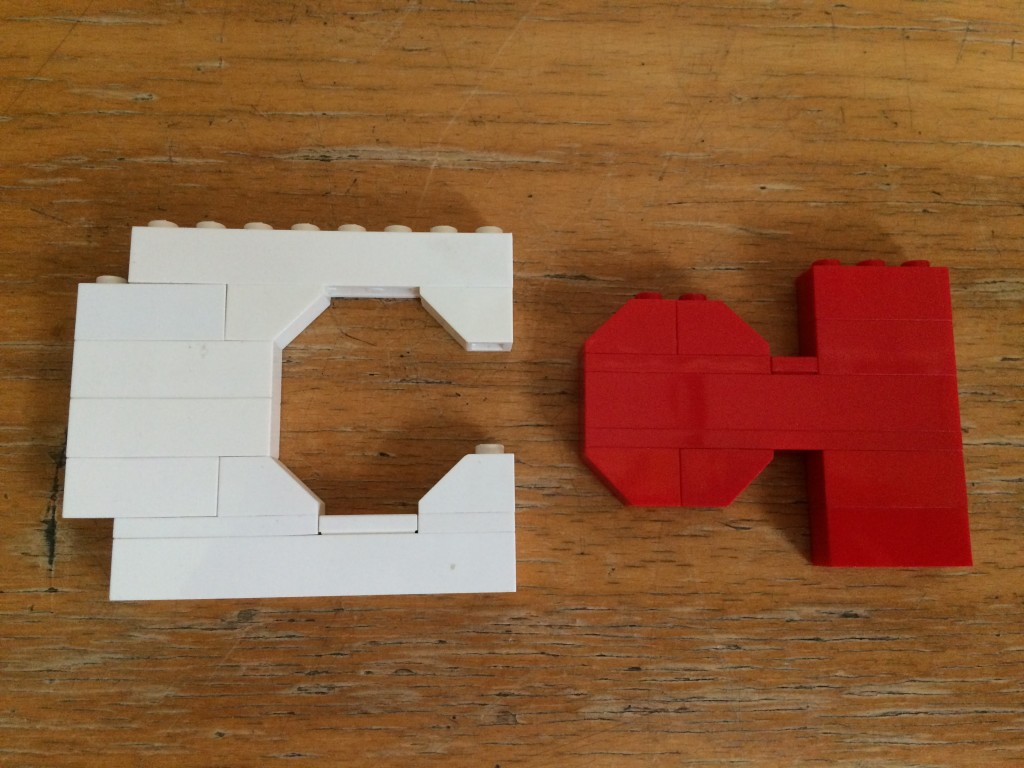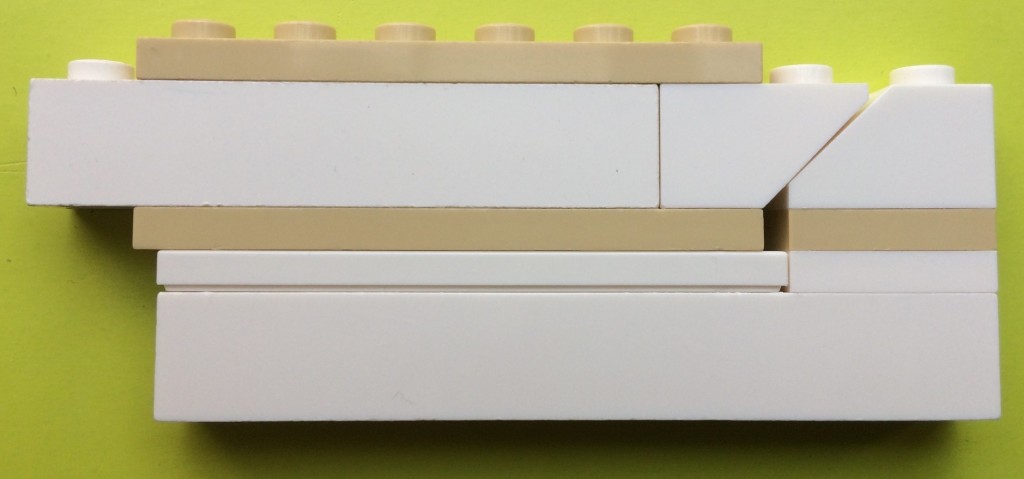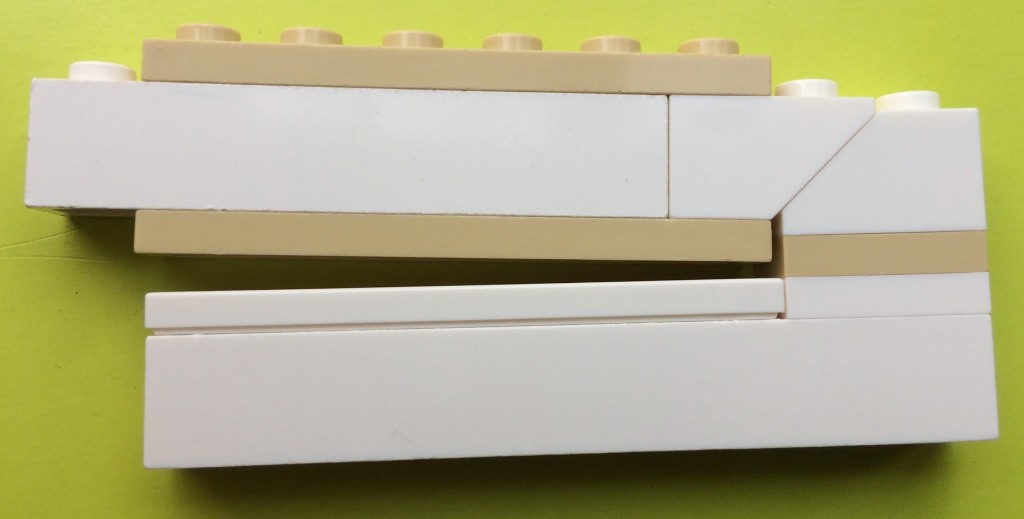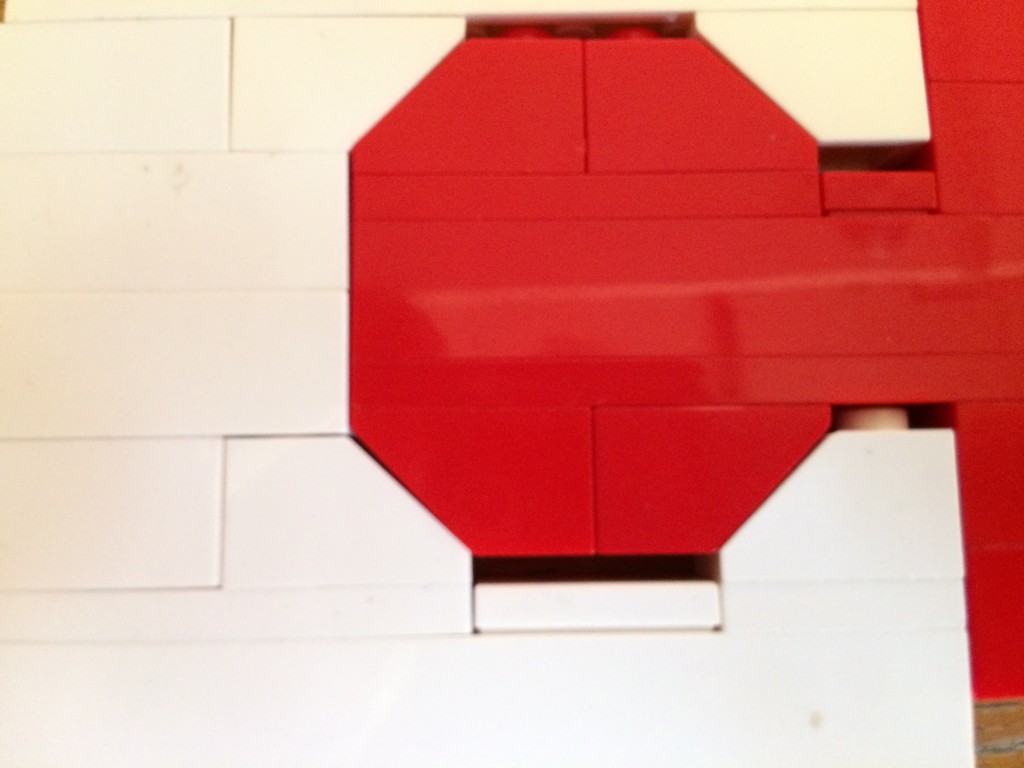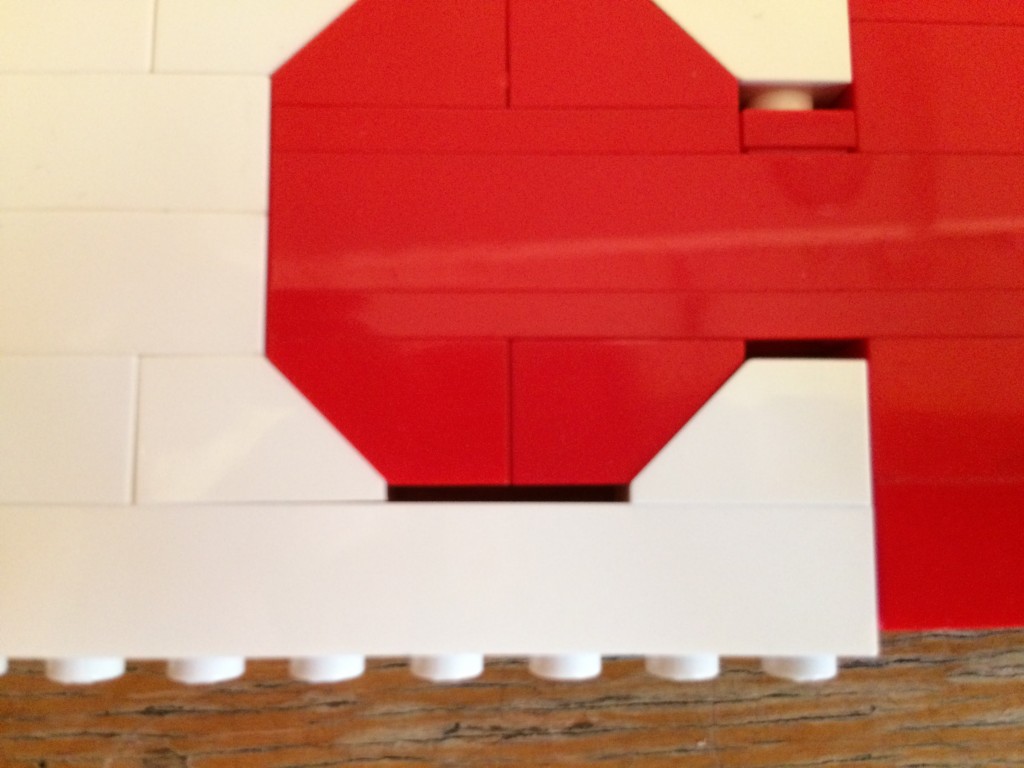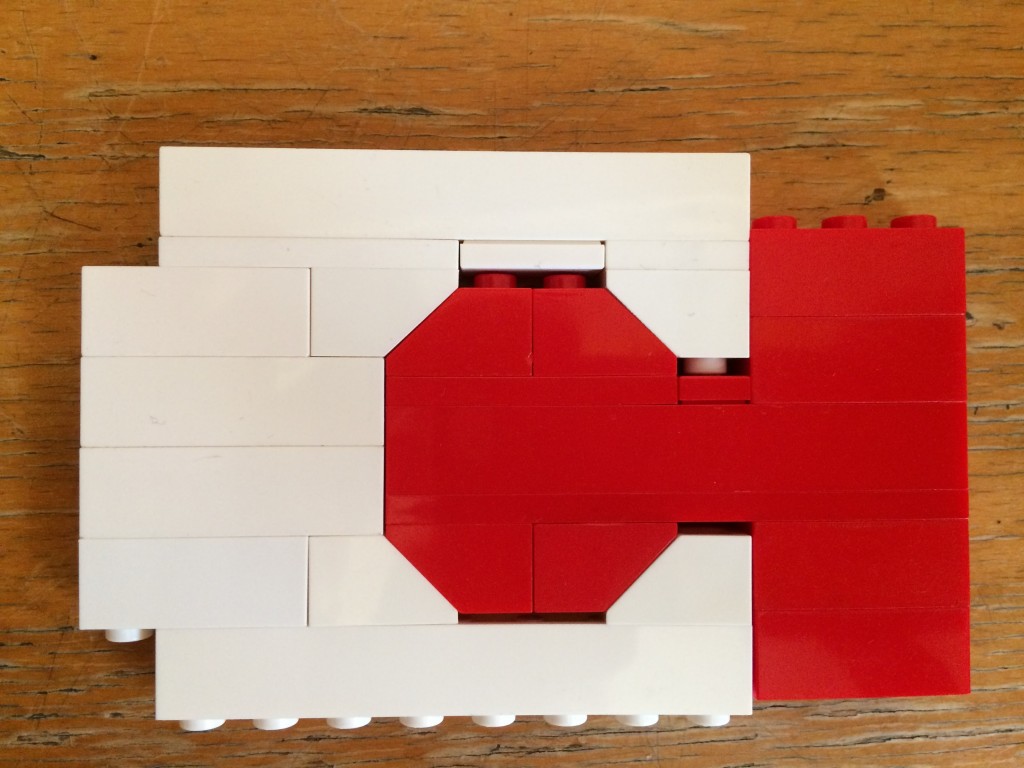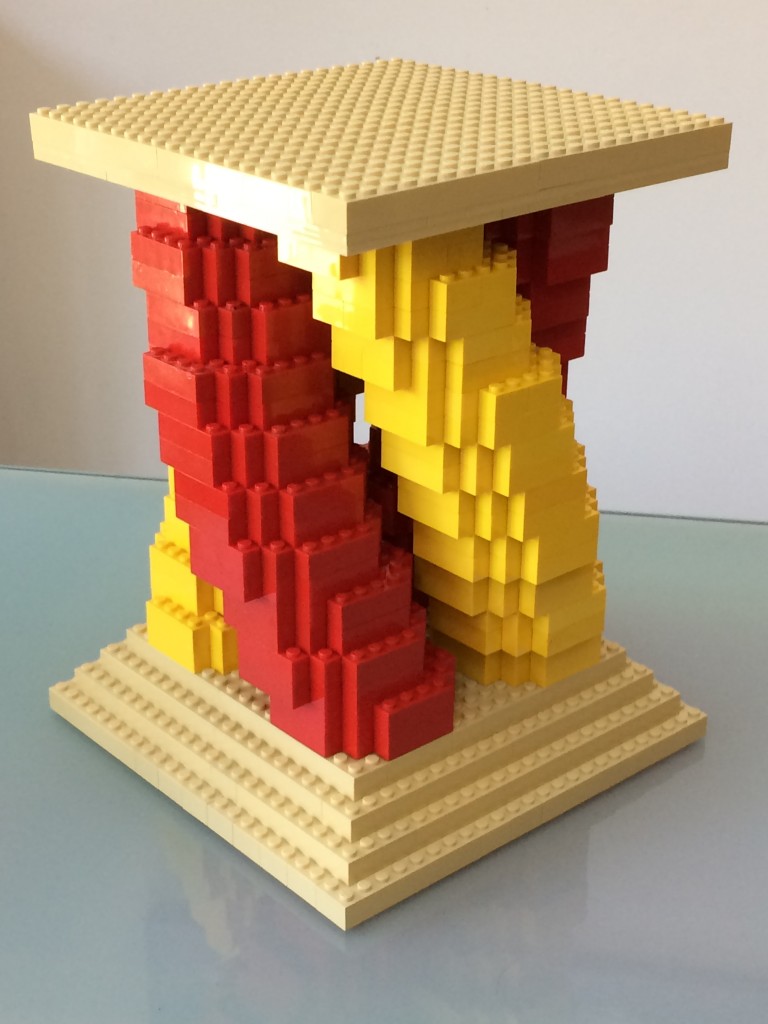I visited my local LEGO Store (Watford, UK) yesterday and filled up three Pick-a-Brick cups. I posted photos on my Flickr to show what part are available.
Here is the low-down on my haul:
 With care, it is possible to get loads of pieces in each cup. Here you can see how I put larger plates (the red ones) in later, around the edge, after filling the bottom with smaller parts. Those googly eyes are irresistible!
With care, it is possible to get loads of pieces in each cup. Here you can see how I put larger plates (the red ones) in later, around the edge, after filling the bottom with smaller parts. Those googly eyes are irresistible!
I filled a small cup too. Around the edge of the cup are tan 2×6 plates partially connected. In the middle is a block of 2×4 bricks. Into the gaps, I pushed a whole bunch of small black wedge-shaped pieces (these parts). On top of these, I threw in loads of 2×4 plates. I could have spent another hour stacking them, but I wasn’t quite that patient.
The third cup is similarly stacked full of small parts. Back at home, I use these sorting trays to sort out the parts. These are from Really Useful Boxes, and they have sufficient curve at the bottom and sides of each compartment that it is easy to pick up the parts.
Costs
In the UK, large Lego PaB cups are £11.99 and small ones are £6.99. If you re-use a cup, you get a discount (75p off the large cups, 50p off the small cups). I also had a voucher and some Lego VIP points, so I got all three cups for next to nothing.
The geeky bit:
Summary
- Weight with cups 943g.
- Total 1525 pieces
- Weight of small cup (empty) 55g
- Weight of large cup (empty) 83g
Cup 1: 244g incl. cup. 189g excl. cup 183 pieces.
- 29x black cheese 1×2
- 11x tan plate 2×4
- 17x tan brick 2×4
- 50x tan plate 2×6
- 76x white plate 2×4
Cup 2: 248g incl. cup. 193g excl.cup. 581 pieces.
- 62x red tile 2×2
- 157x grey tile 2×2
- 4x tan brick 2×4
- 28 dkgrey hinge 1×2
- 21 yellow hinge 2×1
- 22 grey hinge 2×1
- 77x black round plate 1×1
- 52x green headlight 1×1
- 148x white round tile 1×1 eyes
- 1x grey plate 1×2
Cup 3: 450g incl. cup. 367g excl. cup. 761 pieces
- 13x red plate 2×8
- 134x yellow tile 2×2
- 129x grey plate 2×2
- 106x dkgrey plate 1×2
- 3x orange round plate 1×1
- 2x black round plate 1×1
- 4x tan brick 2×4
- 8x tan plate 2×4
- 25x white round tile 1×1 eyes
- 85x white jumper plate 1×2
- 87x white jumper plate 1×2
- 30x black hinge plate 1×2
- 30x pink tile 1×2
- 67x black cheese 1×2
- 38x brown plate 2×4


